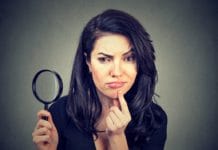The responsibilities of a forensic odontologist include which of the following?
Forensic odontologists' responsibilities are more than just identifying human remains. They also assess bite mark injuries for criminal cases as well as abuse cases, estimate the age of a victim, and provide insight for civil malpractice cases.
Mohammed, F., Fairozekhan, A.T., Bhat, S., Menezes, R.G. Forensic Odontology. 2020 Sep 1. In: StatPearls [Internet]. Treasure Island (FL): StatPearls Publishing; 2021 Jan–. PMID: 31082028. Retrieved from https://www.ncbi.nlm.nih.gov/books/NBK540984/
Forensic odontologists can determine a child's age within a range, even in fetuses and neonates.
Age estimates in pediatric groups are determined by the development and eruption of the dentition. Forensic odontologists can make estimations with a range of plus/minus 1.5 years. This is helpful in identifying children and avoiding the need for parents or next of kin to make a visual identification, especially in cases when the body is in poor shape.
Mohammed, F., Fairozekhan, A.T., Bhat, S., Menezes, R.G. Forensic Odontology. 2020 Sep 1. In: StatPearls [Internet]. Treasure Island (FL): StatPearls Publishing; 2021 Jan–. PMID: 31082028. Retrieved from https://www.ncbi.nlm.nih.gov/books/NBK540984/
According to physical anthropologists, our global population can be categorized into three categories, Caucasus, Mongolian, and Negroid. This is used to determine race in forensic odontology. Which of the following is not a characteristic of a Caucasoid?
Caucasoids dental complex include absenteeism of shovel-shaped incisors, high incidence of bilateral counter winging, absence of premolar enamel pearls, high incidence of the cusp of Carabelli, and absence of expression of the protostylid of the sixth and seventh cusp.
Mongoloid dental complex includes, high incidence of shovel-shaped incisors, enamel pearls occur more commonly on the premolars, and the cusp of Carabelli or tubercle presents in the negative form with pits and grooves.
Negroid dental complex includes small teeth with spacing, high incidence of midline diastema, increased incidence of supernumerary teeth, lower premolars have two distinct cusps sometimes even three, absence of shovel-shaped incisors and cusp of Carabelli, third molars are rarely impacted, class III malocclusion and open bite are more common.
Mohammed, F., Fairozekhan, A.T., Bhat, S., Menezes, R.G. Forensic Odontology. 2020 Sep 1. In: StatPearls [Internet]. Treasure Island (FL): StatPearls Publishing; 2021 Jan–. PMID: 31082028. Retrieved from https://www.ncbi.nlm.nih.gov/books/NBK540984/
Rawlani, S.M., Rawlani, S.S., Bhowate, R.R., et al. Racial Characteristics of Human Teeth. International Journal of Forensic Odontology. 2017; 2(1): 98–42. Retrieved from https://www.ijofo.org/article.asp?aulast=Rawlani;epage=42;issn=2542-5013;issue=1;spage=38;volume=2;year=2017
Cheiloscopy is a forensic investigation technique that identifies humans based on which of the following?
Cheiloscopy is a forensic investigative technique that analyzes lip prints. Like fingerprints, lip prints are unique and do not change over time with aging. Lip prints can be used to identify the victim or the suspect in a criminal case. Lip prints can be obtained at a crime scene from the deceased, clothing, glasses, cigarettes, windows, and doors.
Mohammed, F., Fairozekhan, A.T., Bhat, S., Menezes, R.G. Forensic Odontology. 2020 Sep 1. In: StatPearls [Internet]. Treasure Island (FL): StatPearls Publishing; 2021 Jan–. PMID: 31082028. Retrieved from https://www.ncbi.nlm.nih.gov/books/NBK540984/
Jeddy, N., Ravi, S., Radhika, T. Current Trends in Forensic Odontology. J Forensic Dent Sci. 2017; 9(3): 115-119. doi:10.4103/jfo.jfds_85_16.
If mitochondrial DNA is not in high enough concentrations to determine conclusive identification, then genomic DNA is useful as it is found in higher copies in every cell.
Both statements are false. The opposite is true. If genomic DNA is not found in high enough concentrations for conclusive identification, then mitochondrial DNA may be needed to make an identification. Mitochondrial DNA exists in higher numbers in every cell of the body, making it very useful in identification when genomic DNA is lacking. Though teeth are an excellent source of genomic DNA, in some cases, such as in bodies that have only skeletonized tissue, mitochondrial DNA can still be obtained.
Mohammed, F., Fairozekhan, A.T., Bhat, S., Menezes, R.G. Forensic Odontology. 2020 Sep 1. In: StatPearls [Internet]. Treasure Island (FL): StatPearls Publishing; 2021 Jan–. PMID: 31082028. Retrieved from https://www.ncbi.nlm.nih.gov/books/NBK540984/
Jeddy, N., Ravi, S., Radhika, T. Current Trends in Forensic Odontology. J Forensic Dent Sci. 2017; 9(3): 115-119. doi:10.4103/jfo.jfds_85_16.
Lip prints can be used to identify the sex of an individual. This can be useful in criminal cases when identifying a suspect. Which of the following describes lip prints of a male?
The 10mm wide area in the middle of the lip is the best area to use to assess the sex of an individual. Six different types of prints have been described by Suzuki and Tschihashi. These types are as follows:
- Type I- clear cut grooves running vertically across the lip (female dominant)
- Type I'- grooves are straight but disappear halfway instead of covering the entire breadth of the lip (female dominant)
- Type II- grooves are branched (female dominant)
- Type III- grooves intersect (male dominant)
- Type IV- grooves are reticulated (male)
- Type V- undifferentiated grooves/varied patterns (male)
Ramakrishnan, K., Sharma, S., Sreeja, C., Pratima, D.B., Aesha, I., Vijayabanu, B. Sex Determination in Forensic Odontology: A Review. J Pharm Bioallied Sci. 2015; 7(Suppl 2): S398-S402. doi:10.4103/0975-7406.163469. Retrieved from https://www.ncbi.nlm.nih.gov/pmc/articles/PMC4606628/
Malik, R., Goel, S. Chelioscopy: A Deterministic Aid for Forensic Sex Determination. J Indian Acad Oral Med Radiol. 2011; 23: 17–9. Retrieved from https://www.proquest.com/openview/d0f7a3951ea4774042b93d52dc6ca392/1?pq-origsite=gscholar&cbl=536318
Though bite marks are questionable in the area of forensic odontology due to the elasticity of skin leading to distortion, saliva deposited during the bite can be analyzed to identify a suspect. Saliva can be used as a determinant of sex, species, and the presence of drugs, in addition to providing DNA.
Bite marks can be distorted due to the elasticity of the skin, making the conclusive identity of a suspect difficult. However, saliva left behind from the bite provides much more solid evidence when identifying a suspect. Multiple methods are used to detect dried saliva on the skin as well as other fomites. Methods of detection include the use of chemicals and enzymes, laser, ultraviolet light, and fluorescent spectroscopy. By obtaining exfoliated buccal epithelial cells in saliva, the sex of the suspect can often be determined. Depending on the material the saliva is deposited on, these cells are detectable for several weeks after deposition. The presence of sex chromatin and hormone levels help to determine the sex of the suspect.
Saxena, S., Kumar, S. Saliva in Forensic Odontology: A Comprehensive Update. J Oral Maxillofac Pathol. 2015; 19(2): 263-265. doi:10.4103/0973-029X.164549.








